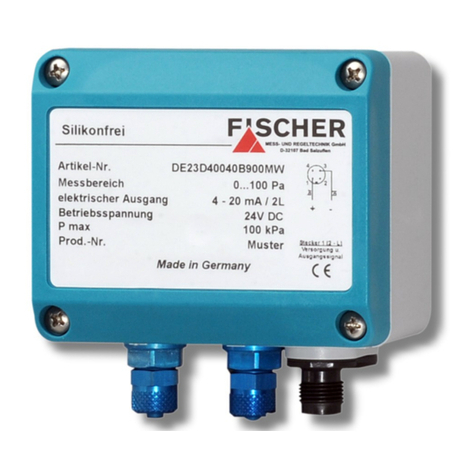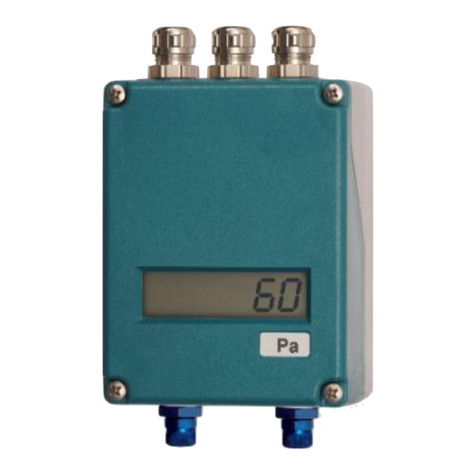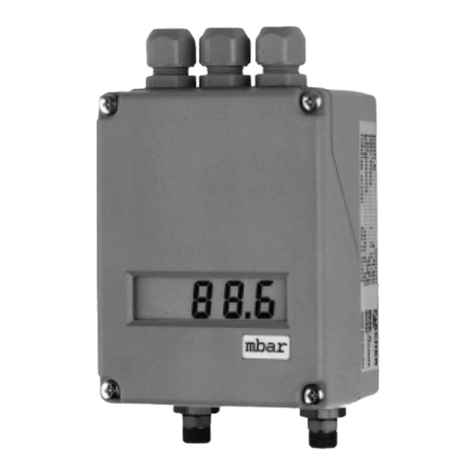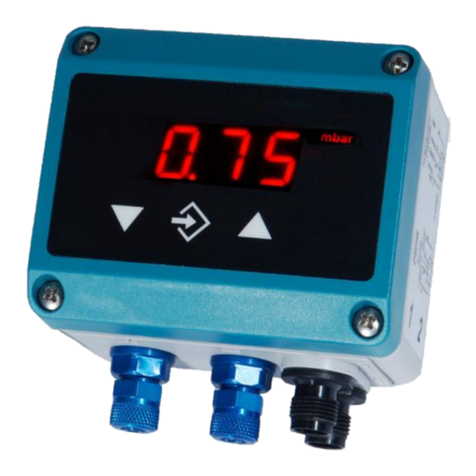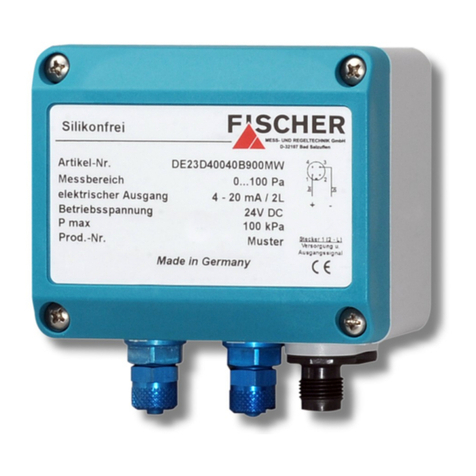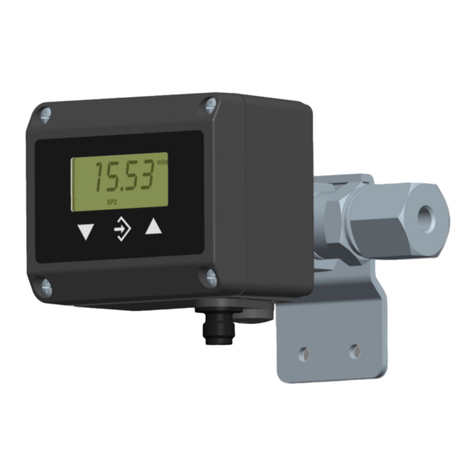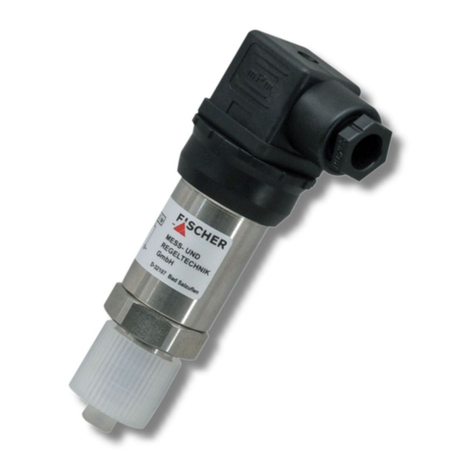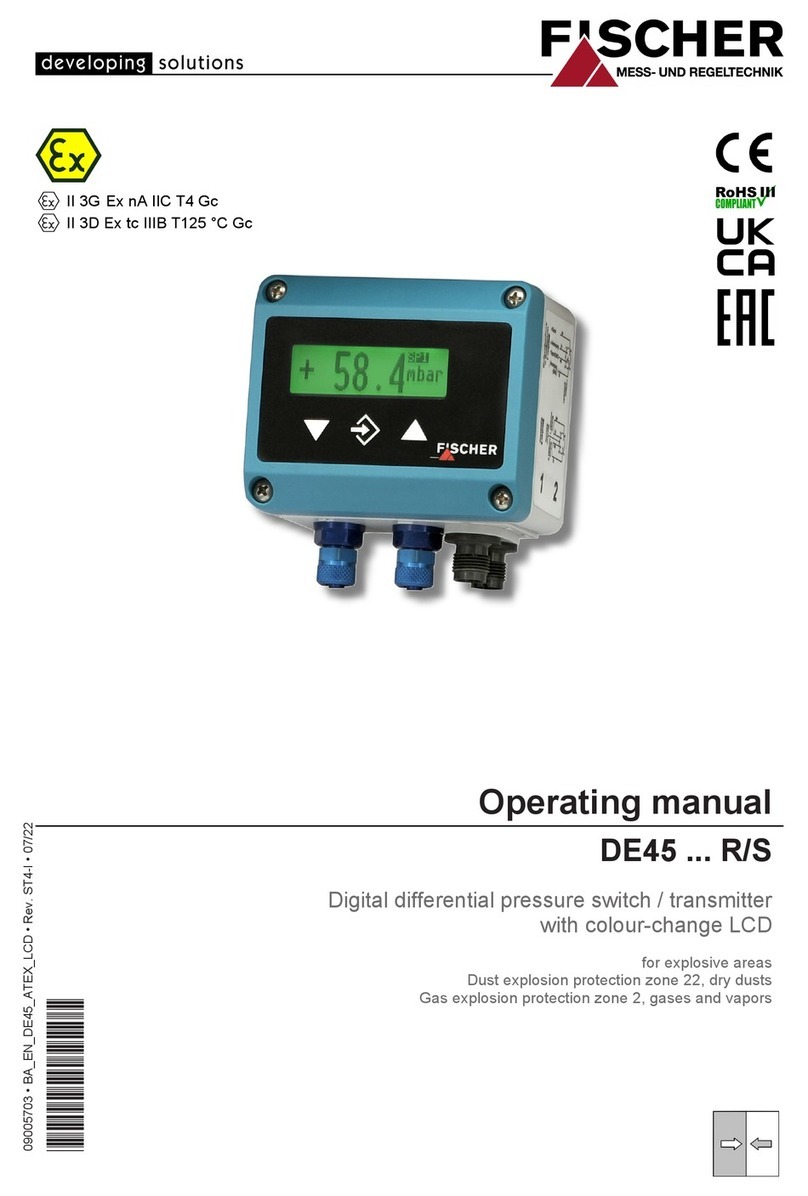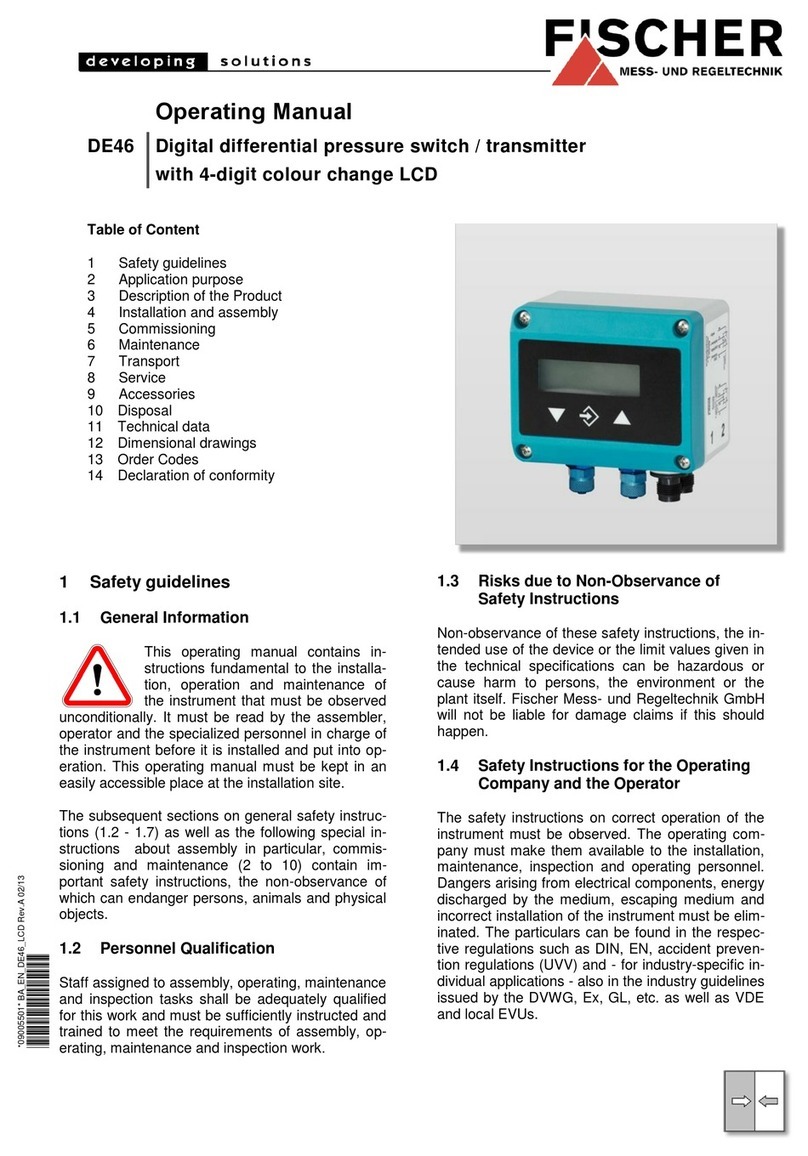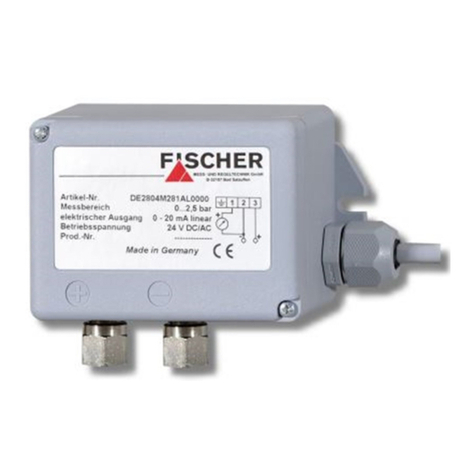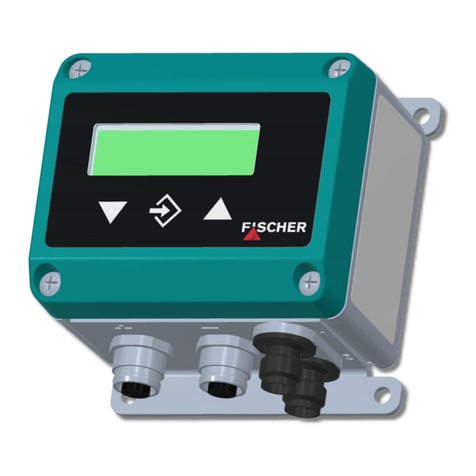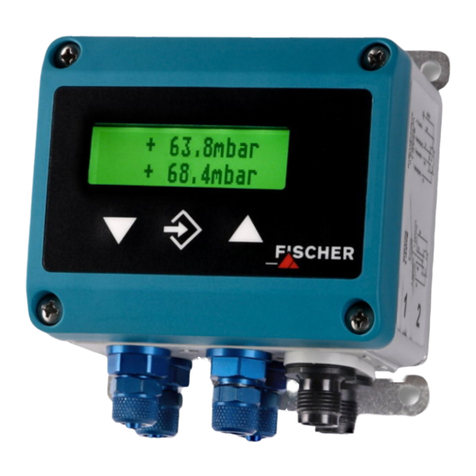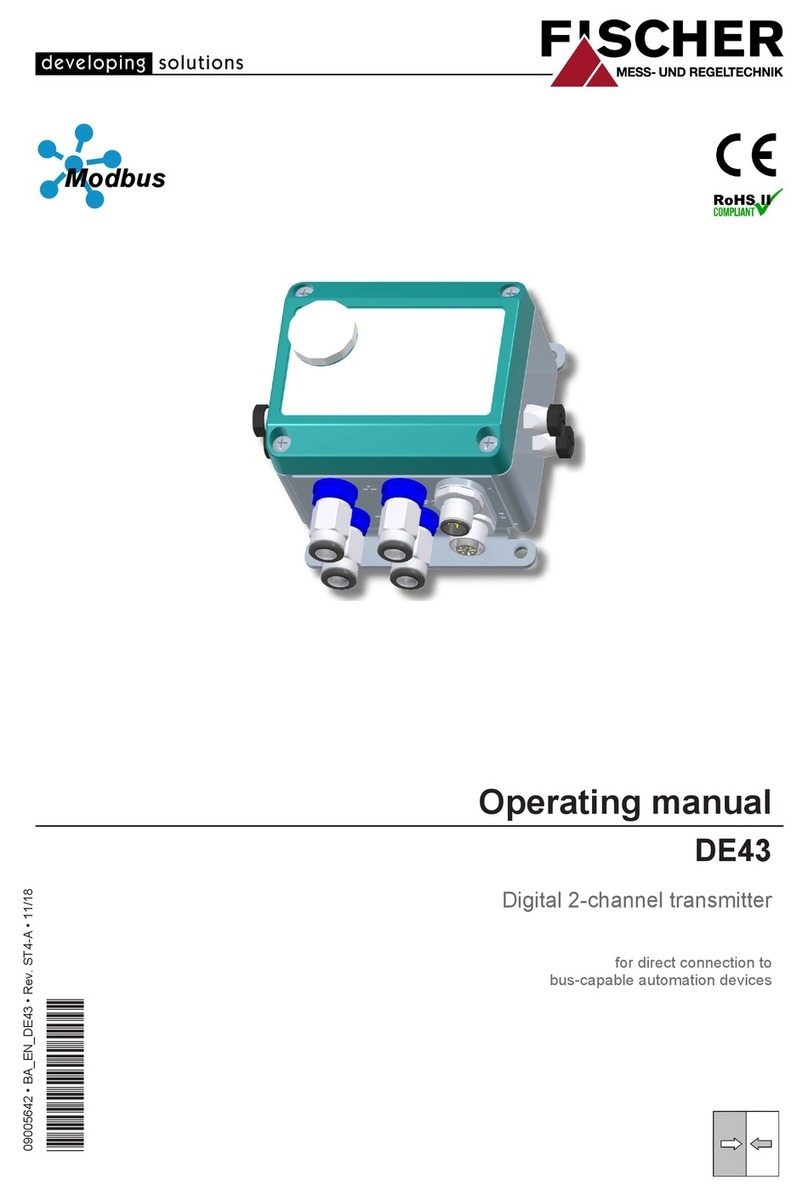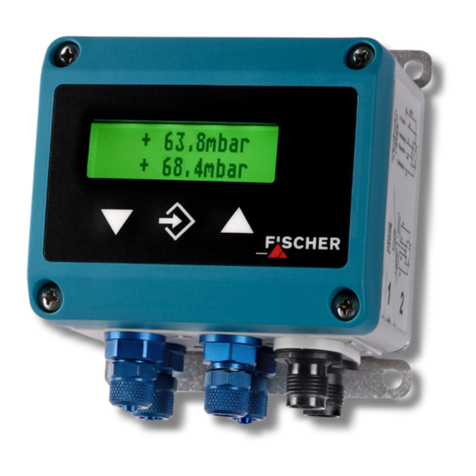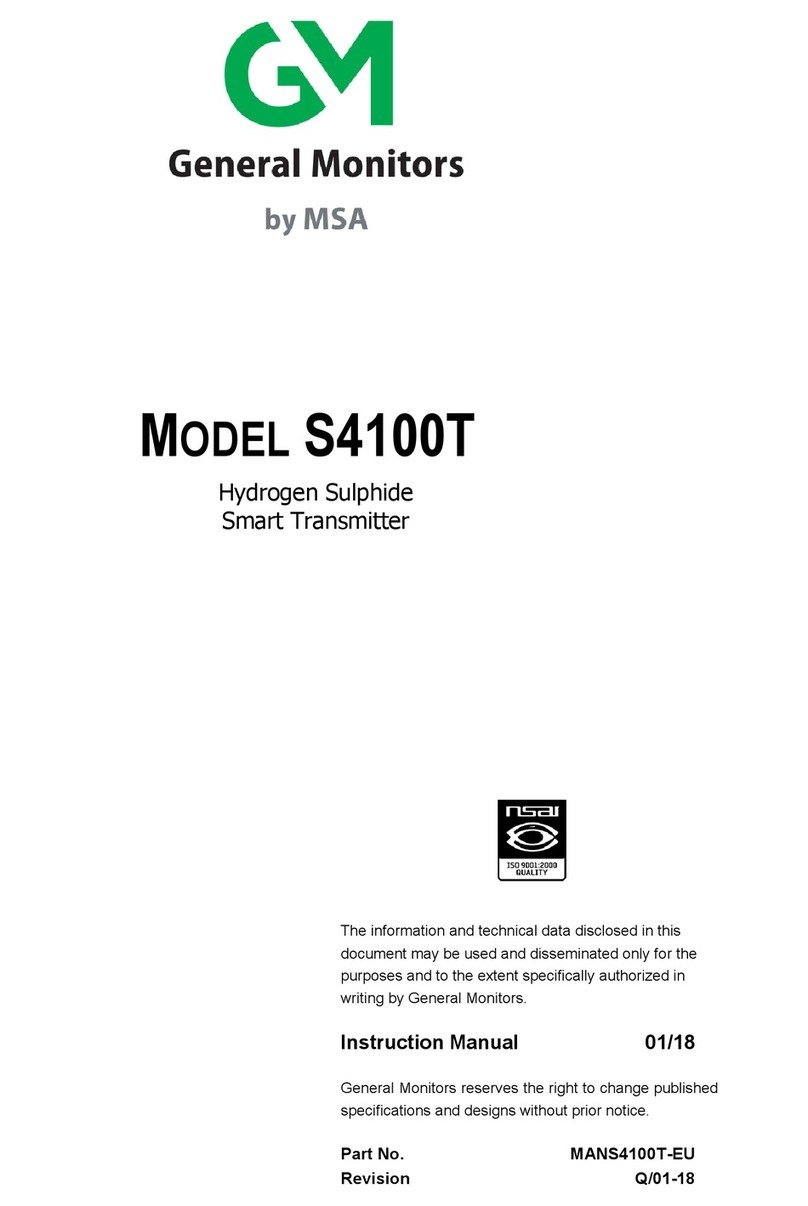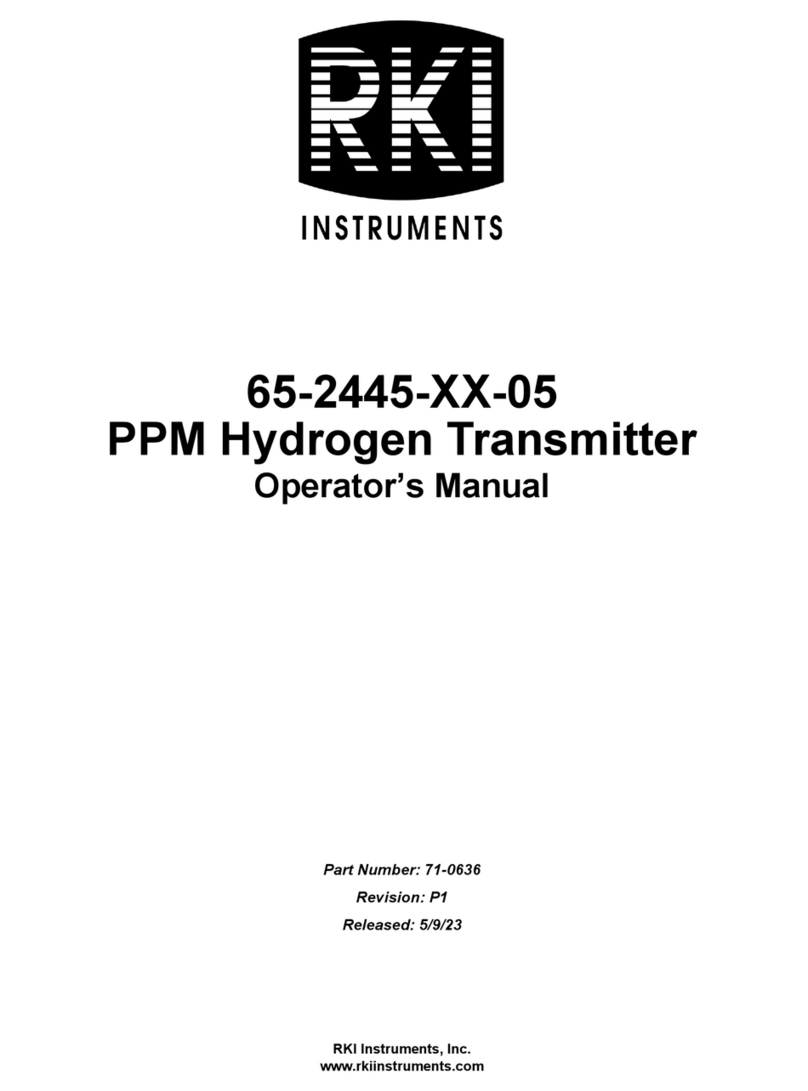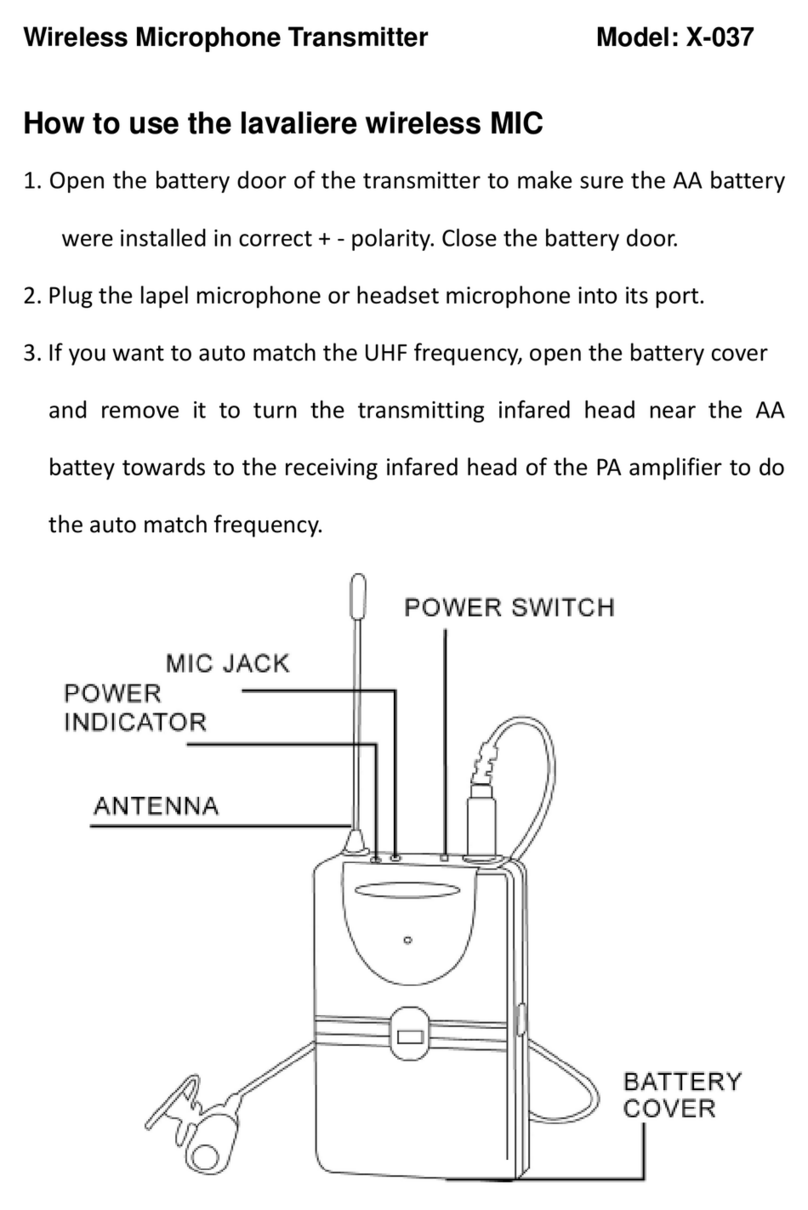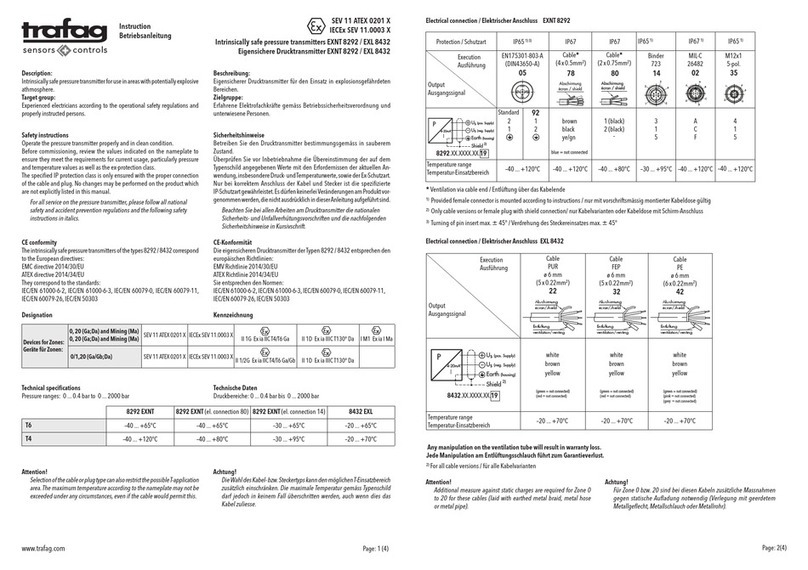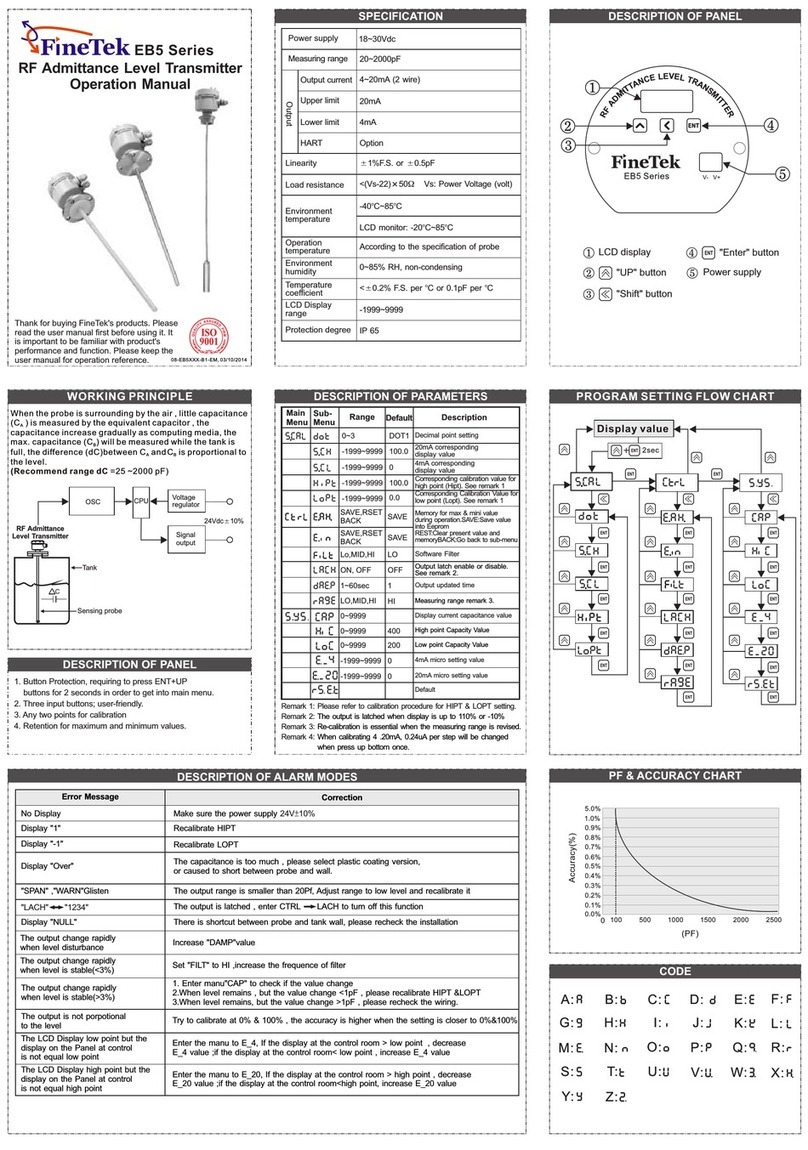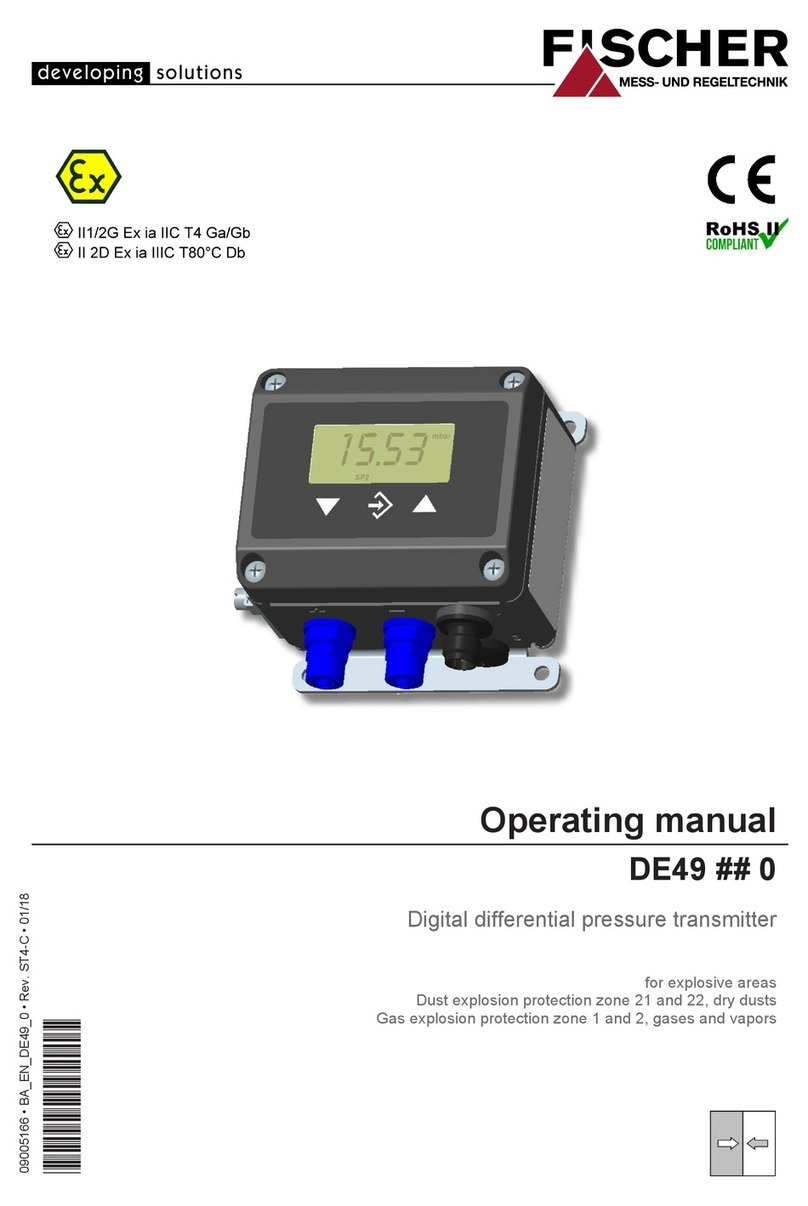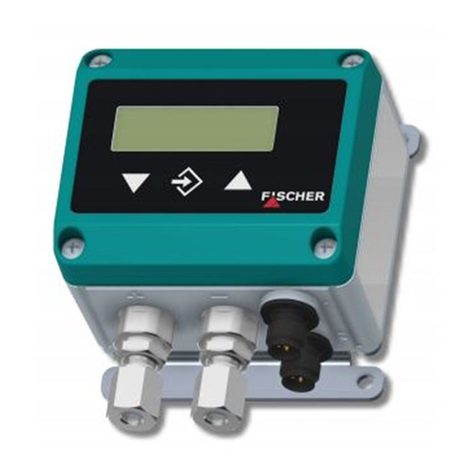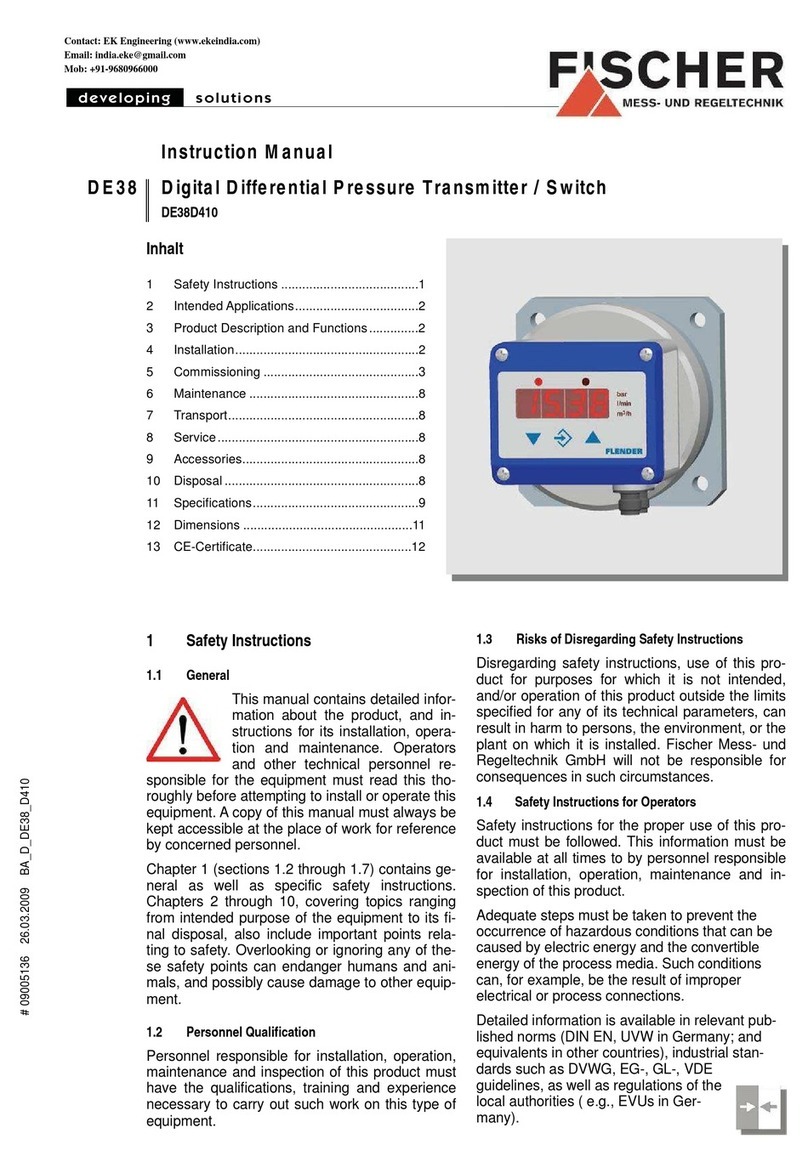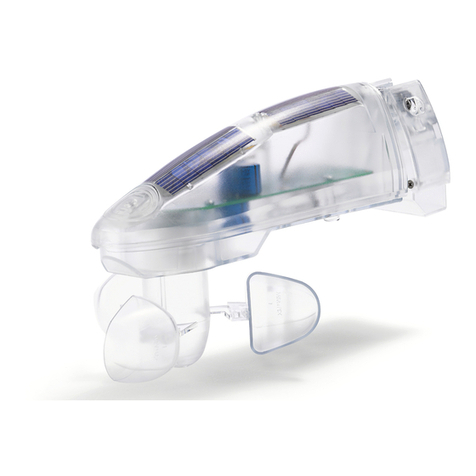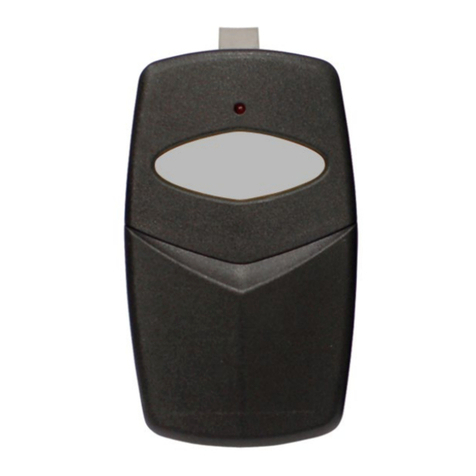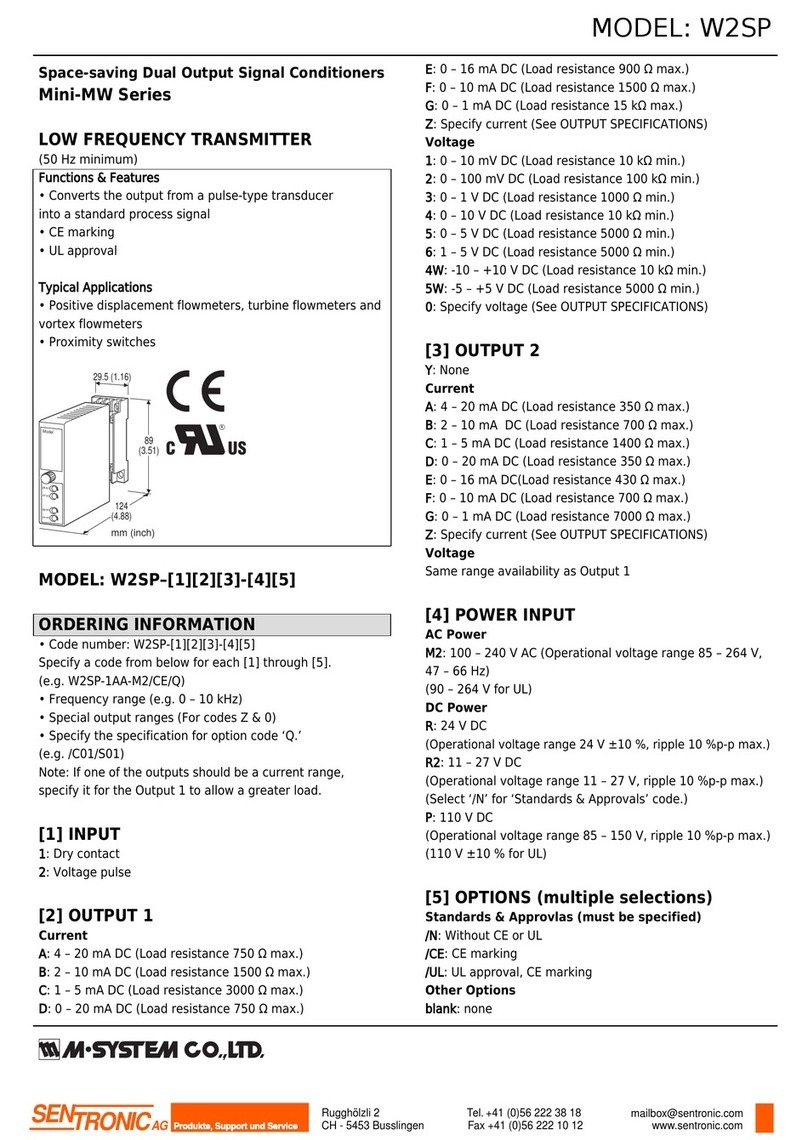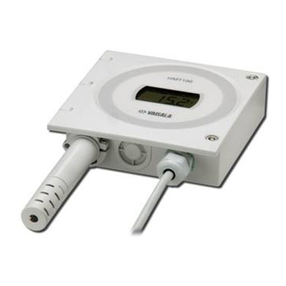
P a g e | 6
For F= 3...30, you only have influence on the 1...28
intermediate values (see section 0) you only have
access to the start and end value via the MA and ME
parameters.
If the parameters MA and ME are
changed, the table will be deleted and
F= 0 is set.
At the start of measuring range (MA), 0% is emitted
by the output signal (e.g. 0 mA).
At the end of measuring range (ME), 100% is emitted
by the output signal (e.g. 20 mA).
5.3.8 Menu jump LIN
If the value of Fis larger than or the same as 3, a
submenu named LIn appears. Here you can access
all table values except for the start of the table (MA)
and the end (ME).
This submenu has its own entry and exit point,
which is represented with End. The table is not
saved until you switch back to this point in the main
menu, meaning that you switch back using the û
key to the LIN parameter.
If the table is not structured correctly, an error mes-
sage Err will appear at this point, and you will not
be able to exit the submenu.
The table consists of 3...30 value pairs. On a device
with a power output, the first value pair is {I01|P01}
.
The initial value I01 determines the level of the out-
put signal. The second value P01 determines at
which pressure the output signal should be emitted.
Then come the value pairs {I02|P02} ... {I30|P30}.
The entry of or changes to the table values via the
membrane keyboard is extremely strenuous and
prone to errors. It is only intended as an emergency
solution in case access to the PC adaptor is not
possible.
The table is correct if the following applies for all
signal values: the value is larger than the previous
value. For the pressure values, therefore, either the
larger (rising characteristic curve) or the lower (fall-
ing characteristic curve) apply accordingly. A transi-
tion from a rising to a falling characteristic curve or
vice versa is not permitted.
5.3.9 Switch Points
The two switching outputs are configured
through four parameters each.
The function of the switching output is deter-
mined through the parameters R1A, R1E, R1D and R1F.
The function of the switching output is deter-
mined through the parameters R2A, R2E, R2D and R2F.
With a voltage output you’ve got {u01|P01} ... {u30|P30}.
The operating principle of this parameter is shown
on example of switching output .
R1A determines the switch-off point, and R1E deter-
mines the switch-on point for switching output .
The values are set in the valid measuring unit
(shown on the right).
Together, both the R1A and R1E parameters deter-
mine the switching function of switching output :
If R1A is smaller than R1E, the output switches on if
the measuring value exceeds R1E. It does not switch
off until the measuring value underruns R1A (hyste-
resis function).
If R1A and R1E are equal, the output switches on if the
measuring value exceeds R1E and off if the measur-
ing value underruns R1A.
If R1A is larger than R1E, the output switches on if R1E
< measuring value < R1A applies (window function).
Both parameters can be set independently across
the entire measuring range.
If the measuring unit is switched, the switch points
are recalculated accordingly. Here rounding errors
may cause deviations in the last point.
R1D allows the reaction of the switching output to
be delayed by 0.0 to 100.0 s. This value applies
equally for switch-on and switch-off.
R1F reverses the function of the switching output. If
the value = 1, the switching output functions as an
NO contact, if the value = 2, the switching output
functions as an NC contact.
5.3.10 Password
The last menu item -P- serves for the input of a
password. A value of 001 to 999 can be selected as
a password. The value 000 renders the password
function invalid.
If a password was assigned, a text PAS is shown af-
ter ESc and û, and you must enter the right value by
using ûand þ ÿ. Only by doing so will you be able
to access all other menu items. In the event of an
error, the reading goes back to the start of the
menu ESc.
If the password is forgotten, it can only
be reset by the manufacturer or over-
written via the PC adapter.
5.3.11 Display Options
The D0 parameter permits the reading to be stead-
ied if the measuring value fluctuates severely. This
filter function is similar to the dAM function, but has
an effect only on the display and not on the output
signal. With D0 = -1, only the switch point LEDs can
be controlled. With D0 = -2, these are switched off.












